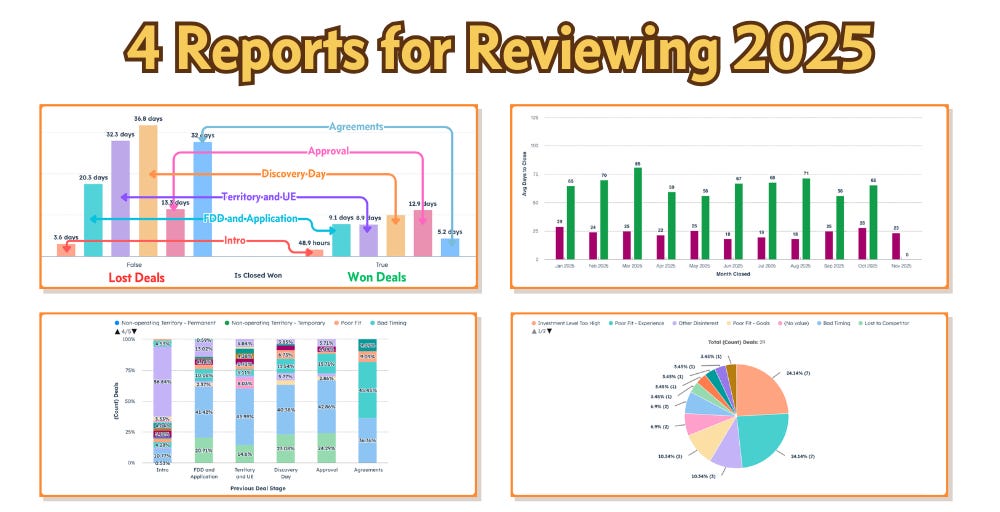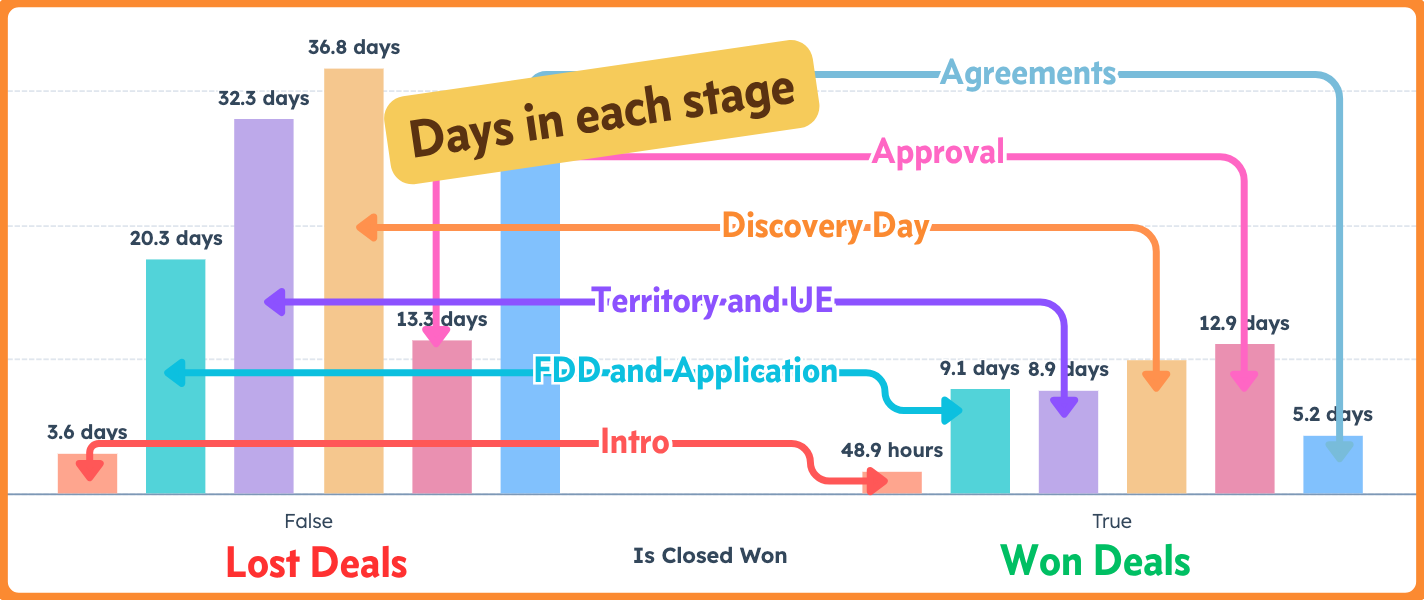4 Reports for Reviewing 2025
You can't fix what you don't see. Day-to-day reporting doesn't give you the insights you need to improve your diligence process.
In this Lab Report:
We’re halfway through Q4. You’re focused on closing the year, it’s also time to think about 2026 and what to do differently. Here are 4 reports most Franchisors don’t have that will help start your analysis and thinking about what you can do to improve your 2026 results.
Why this matters
What do you want out of your 2026 Franchise pipeline? To award a lot of great territories and qualified applicants, obviously.
There’s a lot to that.
You can’t fix what you don’t see and day-to-day reporting that franchisors typically focus on doesn’t give you the insights you need to improve your diligence process overall.
Today we’re going to focus on two important aspects of managing a franchise diligence pipeline:
Deals staying on track
Mitigating needless losses
4 Reports for Reviewing 2025
Average Time in Stage: Lost vs Won Deals
First question for you: do you actually know how long your Won deals spend in each stage? Most franchisors don’t.
Second question: could you handle leads more effectively if you could spot slowdowns sooner?
This report shows you both Won and Lost time-in-stage, side by side.
Look for significant gaps. If Won deals spend 4 days in Territory Selection but Lost deals spent 12 days there, you’ve found a place where deals stall before they die. That 12-day mark is a leading indicator of failure.
Use what you find to implement aging deal tags and processes based on Won deal timings. If Won deals move through FDD in 5 days, any deal that hits 8 days is off track.
Days to Close by Month: Closed Won and Lost Deals
This shows velocity for Won and Lost deals across every month in 2025.
Look for seasonality in Won deals first. Do you close faster in January than July? Then check for acceleration or deceleration trends over time. Are deals getting faster or slower?
Compare what you see to what you think your velocity is. Do you think its 90 days but the data shows 120? Do you think you’re consistent but then find 25-day swings between months?
Closed Lost Category by Stage
You should have normalized categories for why you lose Deals…and your team should be using them correctly. If not, fix that before analyzing.
Look for qualification failures showing up late. Are you losing late-stage deals to net worth or liquidity requirements? That should’ve been caught earlier. Same with disinterest in the concept—why are leads making it to Discovery Day if they’re not interested?
Are you seeing ghosting or failed to contact after Discovery calls? What’s breaking down in your process that leads disappear at that point?
Late-stage losses to early-stage problems mean wasted time and burned credibility.
Closed Lost Category: All Deals
Set the date range to Close Date is This Year and you have an overall breakdown of why deals died in 2025. Compare it to the by-stage report for context.
Focus on Bad Fit and Failed to Contact volume first. If they’re high, break down by lead source. Where are you getting leads you can’t contact or that aren’t qualified?
Any category over 20% of total Closed Lost requires investigation. That’s systematic.
For example: If a big slice of your Lost Deals are due to financing falling through, what should you be doing differently earlier in the pipeline? Losing 25% of late-stage deals to financing is a huge problem and a lot of misplaced effort.
So…now what?
Create these reports for 2025. If you can’t or don’t have the data, let’s talk. Look for the patterns. Identify your opportunities, then figure out what you’re changing in 2026 to fix them.







